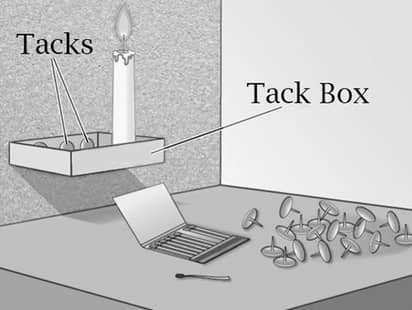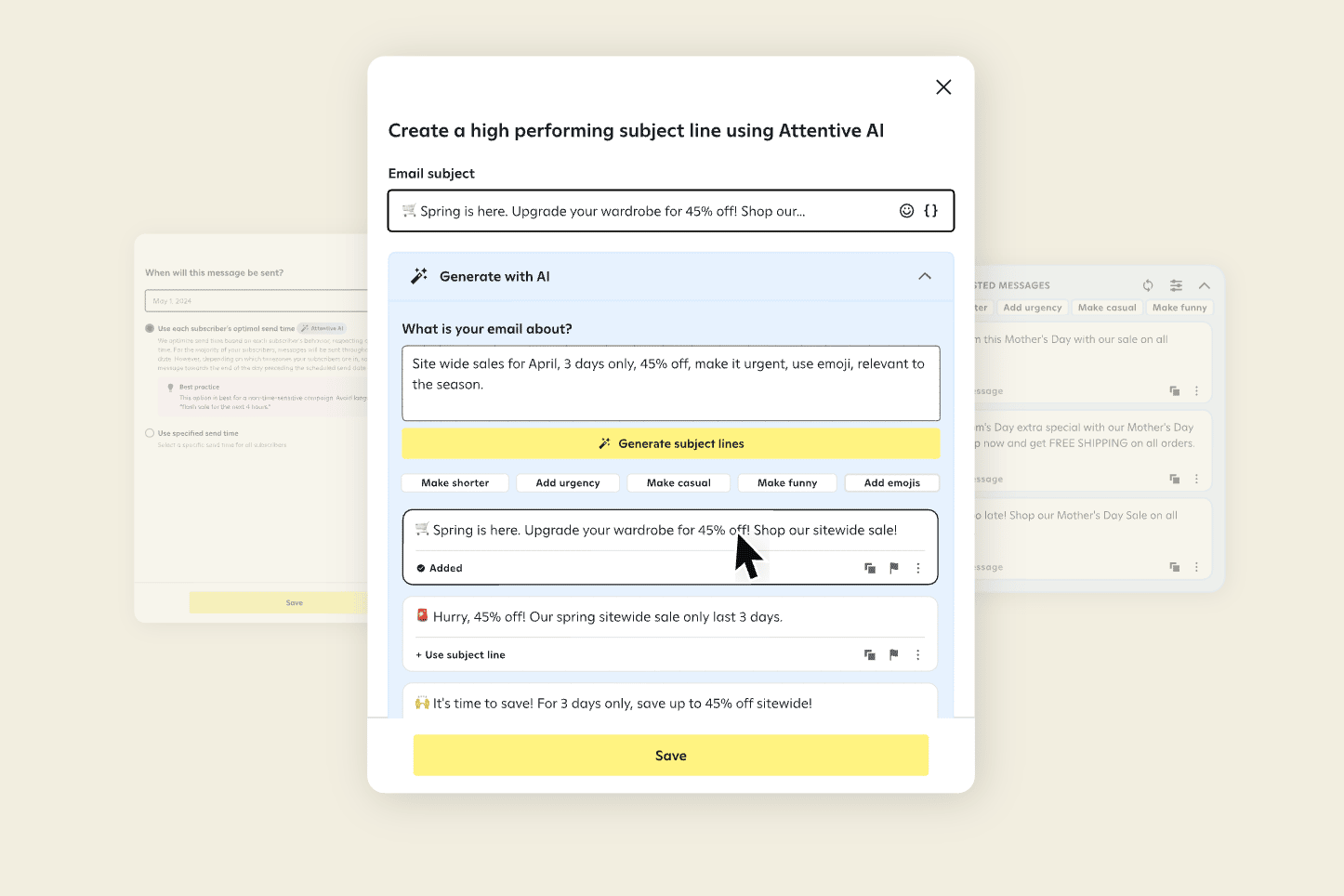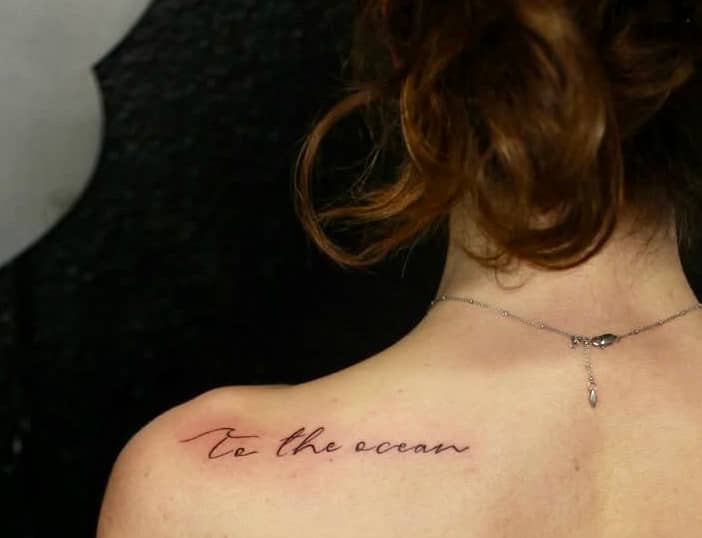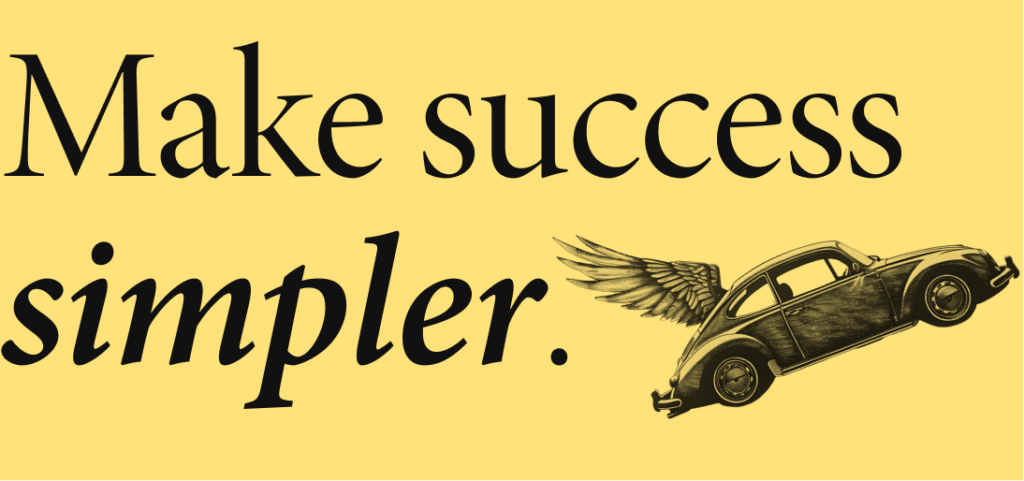Welcome to One Thing Better. Each week, the editor in chief of Entrepreneur magazine (that’s me) shares one way to achieve a breakthrough at work — and build a career or company you love.
Today’s edition is sponsored by Attentive — the AI-powered mobile marketing platform. Details at the end of the newsletter.
You’re stuck.
You’ve been working on a project, but it’s going too slow. Solutions are elusive. Everyone’s frustrated.
Today, I’ll help you achieve faster breakthroughs — by solving a common roadblock in our brains. It’s called cognitive entrenchment.
What’s that?! Here’s how it’s described in the book Uncertain by Maggie Jackson:
In an all-out drive for an answer, people typically spring into action based on what first comes to mind and thus too often wind up seeing the world through the lens of what they already know.
Then they lose sight of every other way to solve a problem.
Once you understand this problem, you’ll be able to work faster and think more creatively.
So let’s start at the beginning — by understanding why our brains get tied in knots. And it all begins with a classic experiment:
Could you solve this puzzle?
Imagine being given a task…
Your goal: Attach a candle to the wall.
The tools available: A book of matches, and a box of tacks.
Like this:

How would you attach the candle to the wall? Spend a moment thinking about it.
I’ll create some space, so you don’t accidentally see the solution below.
OK.
Give up?
This is known as Duncker’s candle problem. It was created in 1935, and has become one of the most famous cognitive performance tests.
Three out of five people failed it. Many tried tacking the candle directly to the wall, or gluing it there with melted wax. Neither work.
The solution is actually this:

Tack the box to the wall, then use the box as a platform for the candle. The rest of the stuff is useless.
Why don’t more people figure it out? It’s because the box is initially full of tacks — so instead of seeing the box as an object to use, people just see it as a holder for the tacks.
That’s the whole point, according to Duncker: We often “fixate” on common uses for things — and as a result, we miss their “essential aspects” and cannot solve the problem.
We do this all the time
The problem, Duncker wrote, is that our brains crave efficiency.
Instead of building new insights, we rely on existing ones. So instead of asking, “How can I use this box?”, we think to ourselves, “Oh, I know what that box is for.” Because why waste time reconsidering a box, when you already know its function?
But what if we didn’t do that? In Uncertain, author Maggie Jackson describes an incredible follow-up experiment:
In 2000, researchers created a new version of the candle test — but this time, it was for kids. Children were given a toy bear, and told to place it on a high shelf. To accomplish this task, she gave the kids a box full of toys that might help.
The solution to the puzzle is simple: Dump out all the toys, which are totally useless, and then use the box as a stepstool to reach the shelf.
Older children struggled with this, just as adults struggled with the candle experiment. But five-year-olds outperformed everyone. Jackson writes:
As yet immune to fixedness, kindergartners essentially ask, “What can an object do?” while adults and even second graders stay close to the shortest of what they know, thinking, “What was it made to do?”
In other words, if we want to become better problem solvers, we must somehow approach problems like a five-year-old.
How to think like a child
I happen to have a 5-year-old son. I see how he approaches all tasks.
Here’s what he does: He starts with what he wants. Then he works backwards, using all available resources to serve his goal.
If my son wants to be a police officer, for example, then he transforms everything around him into a police tool. A couch becomes jail. A box becomes a police car.
This is the foundation of imaginative play. But it is also the opposite of how adults think.
Yes, sure, we adults think that we’re goal-oriented — but we’re often actually resource-oriented. We limit ourselves to either the stuff we have, or the stuff we want.
If we can fix that, we can get unstuck.
How to get unstuck, in two questions:
If you’re feeling stuck on a project, step back and ask yourself two questions.
Question 1: What’s my desired outcome?
Oftentimes, our desired outcome is different from the thing we’re doing.
Here’s what I mean:
Let’s say you’re on a sales team. You’ve spent hours on a PowerPoint presentation, but it still sucks and nobody can solve the problem.
You take a step back and ask: What’s the desired outcome here? It’s not actually to have a “perfect PowerPoint presentation.” Nobody cares about that. Instead, the desired outcome is to connect emotionally with the client.
OK! Good to know. On to the next question…
Question 2: How can anything and everything create that desired outcome?
Let’s use the sales pitch example. Do you need a PowerPoint? No. In fact, your client is probably sick of them. And you probably also hate them! You’re making one because it’s simply the first thing you thought of.
So what else can you make? A fun video? Bring props to a meeting? Do anything!
You can apply this everywhere
There are infinite applications for this kind of thinking, at work and home.
Like…
- Schedule. Everyone hates meetings, so why do we keep creating them? Because we’re stuck thinking that meetings are the only way to accomplish a desired outcome. So… what are other ways?
- People on your team. You might have overlooked someone for a new role, because they’re currently doing seemingly unrelated. But… are they actually the perfect person for you?
- Products. In the 1930s, a company called Kutol Products made a non-toxic putty that cleaned soot off walls. But as natural gas replaced coal, there was less need for a wall-cleaning putty — so the company wondered: “What else is this for?” The answer: It was a great toy for kids. Play-Doh was born.
The more I think of this, the more I realize:
The smartest thinkers see unusual uses for common things.
Everyone else saw a phone; Steve Jobs saw a platform. Everyone else saw a house; Airbnb’s founders saw a rentable asset. Everyone else saw shoes; Nike’s founder saw a symbol of personal achievement.
So, are you feeling stuck? Working on a project that’s going too slow? Searching for solutions that are elusive? Managing constant frustration?
Take a look at everything you have.
Then think about what you want to accomplish.
And finally, clear your mind. Forget what things are for. Just consider what they can do.
That’s how to do one thing better.
Create Personalized Marketing — Easily!

Imagine getting a message from your favorite brand that feels like it was created just for you.
Chances are, they’re using Attentive, the SMS and email marketing platform designed to help brands build and connect with their ideal audience.
Attentive helps marketers create unique messages for every subscriber, transforming the consumer shopping experience and maximizing marketing performance.
But how does it work?
Attentive’s AI learns what subscribers actually want based on their real-time interactions with your brand. That means it customizes the content, tone, and timing of every message so they always resonate.
Ready to take customers on a journey created just for them?
Visit attentive.com to learn more.
*sponsored
Why I love hearing from you all…
P.S. I send these emails out into the void. I almost never see how they’re received.
That’s the nature of writing, or making anything. We all hope to make an impact, but can never truly see the fullness of that impact. It’s why I love getting little glimpses of it, by hearing from readers. (Thanks to anyone who’s ever written me!) And sometimes, you share things that truly blow me away.
That’s what just happened…
Last year, I wrote a newsletter about how to move past things you cannot control. It involved a metaphor of sending things “to the ocean”. Then last week, I heard from an OTB reader named Patricia Di Secli — who found that advice helpful at an important moment in her life.
“It worked out,” she wrote. “Now I have this life lesson under my skin.”
And she sent me this photo:

Incredible. And beautiful! As far as I know, it’s the first-ever OTB tattoo! I shared it on LinkedIn — which inspired Emilia Rivolta to read my newsletter and then paint this painting:

I love it! Please, take this as a call to action:
If you’ve ever hesitated to share or create something, or ever wondered if you have something worth saying, just ask yourself: Could this help someone? If the answer is yes, share it.
You may not always see the results. But trust me: The results are there. And you have no idea what will happen next.
